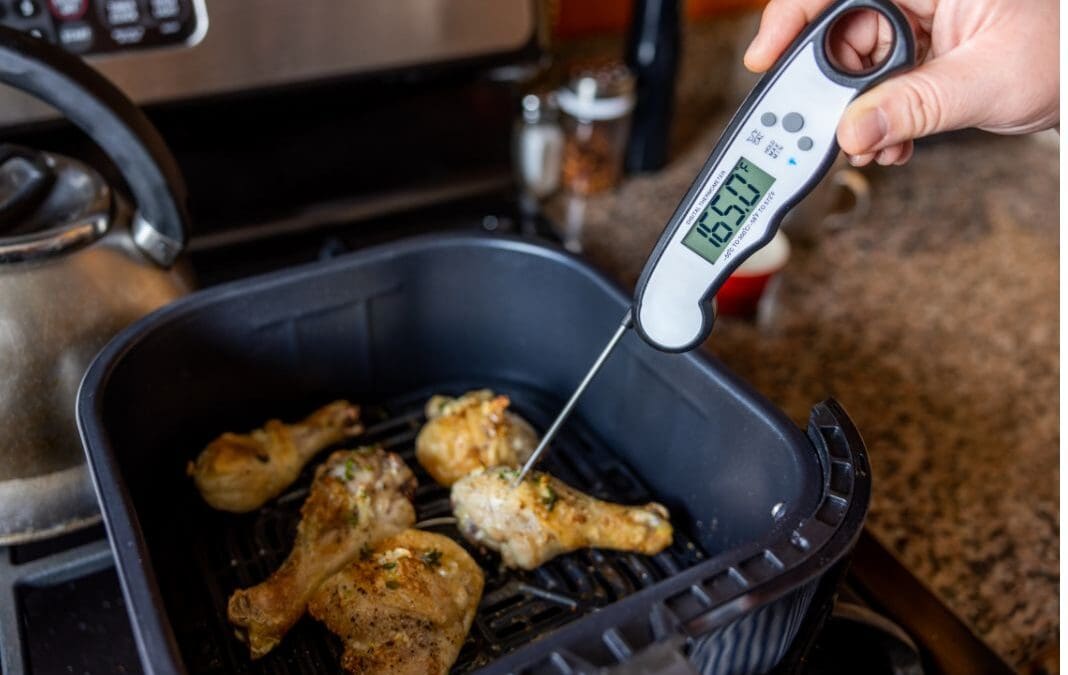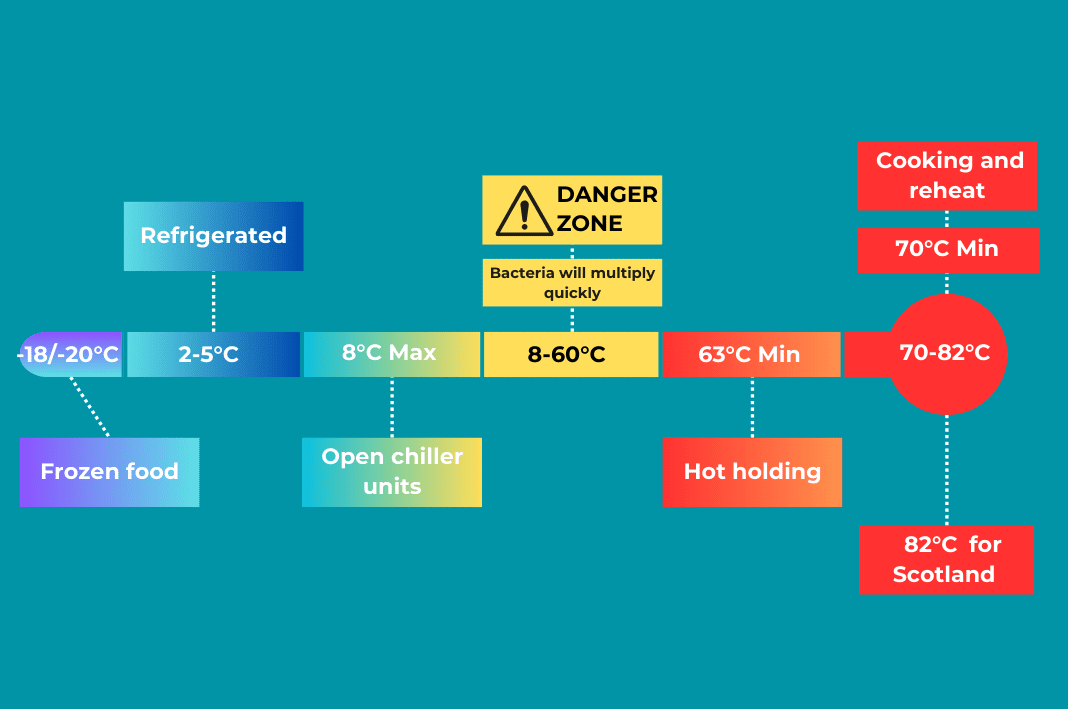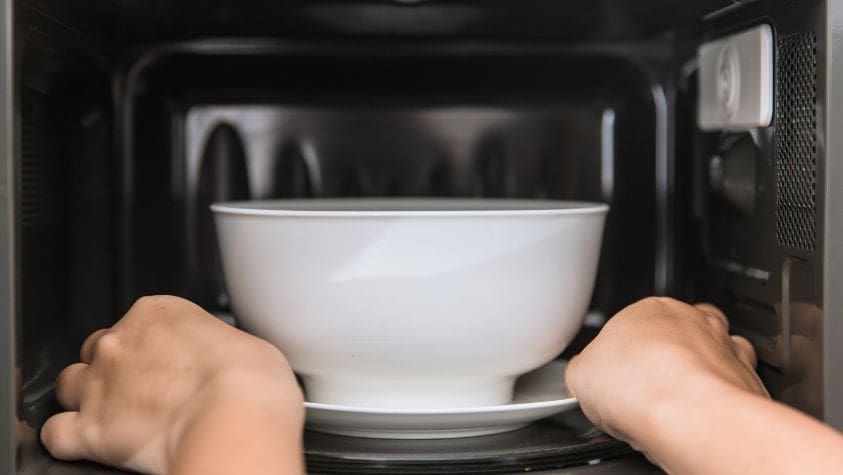Food hygiene danger zone
Whether you’re a professional chef or a home cook, understanding how to store, reheat and cook food is fundamental to maintaining good food safety practices. Central to this understanding is the food hygiene danger zone. This term refers to a temperature range where the proliferation of harmful bacteria such as Salmonella, E. coli and Listeria is most likely to occur on food, leading to foodborne illnesses and posing serious health risks.
This article looks at the food hygiene danger zone in more detail, highlighting its importance, the related risks of food being kept in this temperature zone and strategies to help keep your food safe and outside of this dangerous temperature range.
Understanding the food hygiene danger zone
Defined by the Food Standards Agency (FSA) as the range between 8°C and 63°C, the food hygiene danger zone is where bacteria can multiply rapidly, presenting significant health hazards. To mitigate this risk, it’s important to keep food either frozen, refrigerated at temperatures below 8°C or heated above 60°C. While freezing pauses bacterial growth, it doesn’t eliminate bacteria, making it crucial to cook thawed food thoroughly.
Leaving food within the food hygiene danger zone can lead to mild to severe health issues, particularly affecting vulnerable groups such as young children, the elderly and those with compromised immune systems.
The yellow section in the diagram below identifies the food hygiene danger zone temperature range.
Strategies to avoid the food hygiene danger zone
There are several strategies you can implement to ensure food is safely stored, handled and consumed outside the food hygiene danger zone range. These include:
Reheating food
- Reheat food to at least 70°C. A food thermometer is recommended to check that the food has reached this internal temperature.
- Use heating methods that distribute the heat evenly, like a microwave.
- Use techniques that quickly increase the temperature of food rather than slow heating methods that keep food in the food hygiene danger zone for a longer period of time.
- Eat hot cooked food immediately or keep it above the temperature range of 60°C.
Keeping temperature constant
- Store cold foods below 5°C and hot foods above 60°C. The perfect refrigerator temperature is usually between 1°C and 5°C.
- Do not leave refrigerated food to stand for longer than 2 hours outside the fridge.
- Ensure food that can spoil quickly is put in the fridge shortly after purchase or use.
- Use equipment to maintain these temperatures, such as food that is kept hot in a buffet setting or a professional kitchen.
- Hot food should not be left out for longer than 1 hour and kept at 60°C.
- In a food business, Hazard Analysis and Critical Control Points (HACCP) procedures involve regularly monitoring and recording the freezer’s temperature daily to ensure food safety.
Recommended cooking times and temperatures
Cook foods to their recommended internal temperatures, using a food thermometer for accuracy. This ensures food is safe from bacteria present in the food hygiene danger zone. Here are the recommended internal temperatures for different types of foods:
- Eggs and minced meat should reach 71°C.
- Fish, beef, pork, lamb, and veal are safe at 62°C.
- Poultry, game birds and casseroles require a minimum temperature of 74°C to ensure safety.
Implementing Food Safety Practices
Beyond temperature control, adopting best practices in food handling and storage is essential. This includes:
- Regular hand washing.
- Using separate utensils for raw and cooked foods to avoid cross-contamination.
- Adhering to storage guidelines.
- Training staff in food hygiene and safety level 2 training can further enhance food safety standards in food businesses.
To conclude, recognising and managing the food hygiene danger zone is fundamental when preventing foodborne illnesses. By applying the outlined strategies and best practices, individuals and businesses can ensure food is handled safely, protecting consumers from the risks associated with careless and inadequate food management.
Interested in our online food hygiene and safety training?
Our online level 1 and level 2 food hygiene and safety training courses are perfect for anyone seeking to understand and apply food safety best practices. They also offer theoretical knowledge and practical insights to maintain the highest levels of food hygiene in a food business.
Contact our friendly customer support team who are always ready to discuss your food hygiene training needs.





